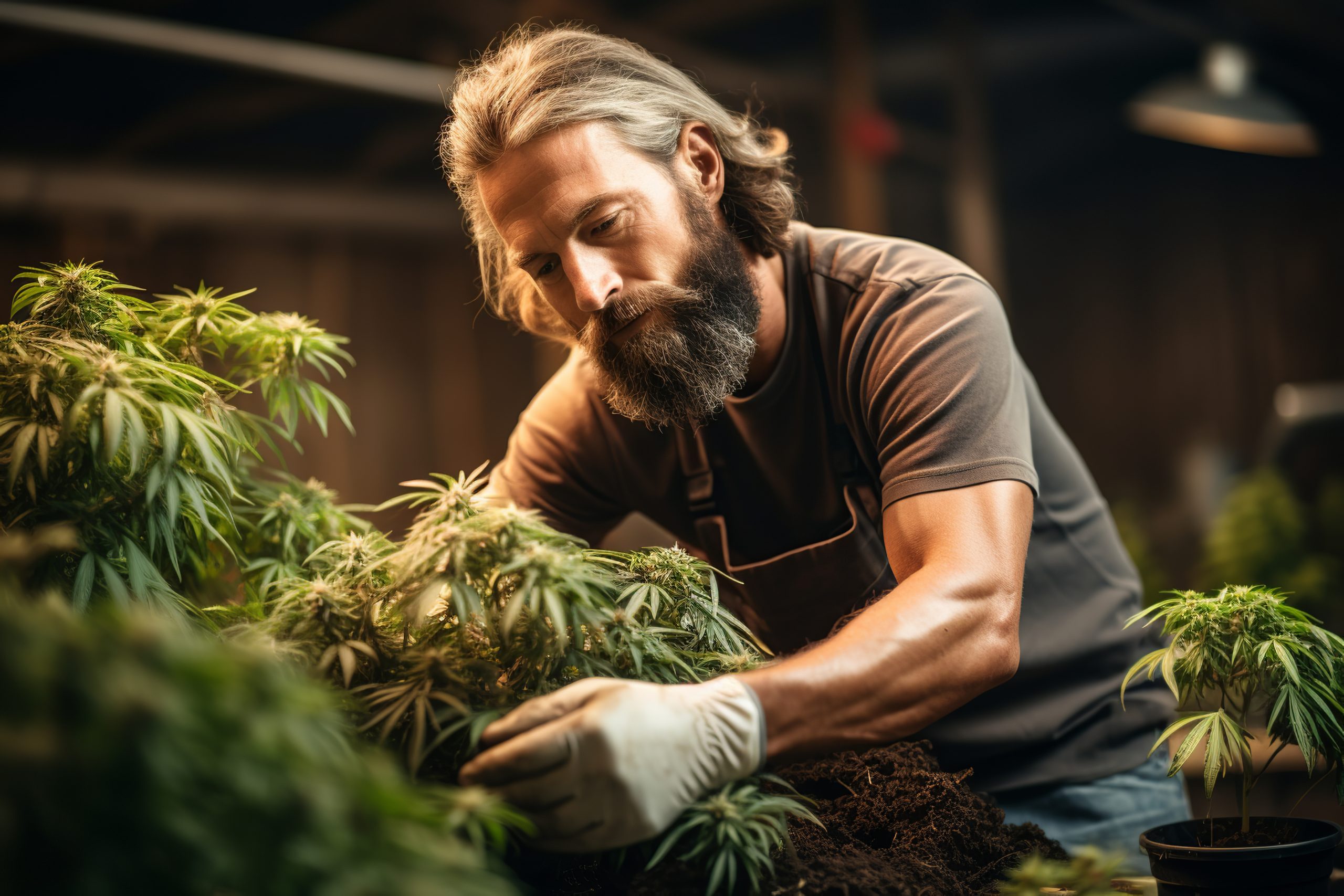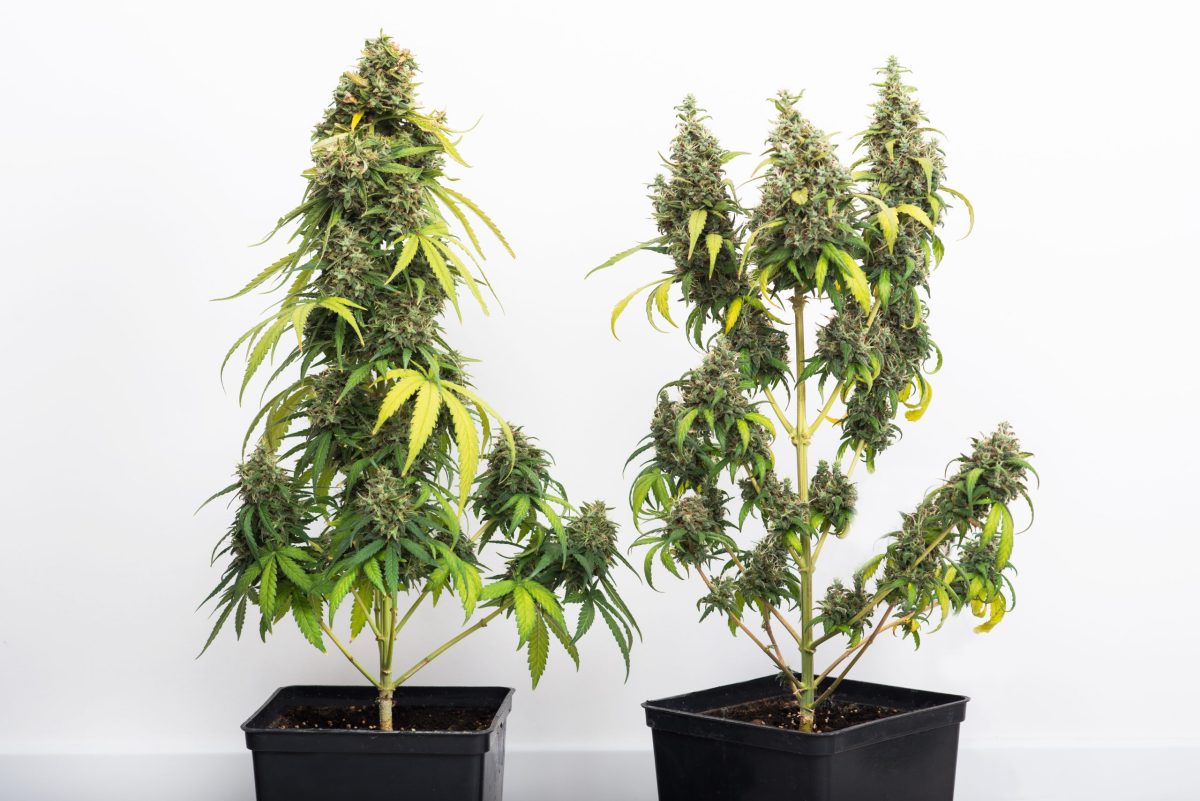If you’re diving into the exciting journey of growing your own cannabis, one of the first things you’ll need to learn is how to tell if cannabis is male or female. It might sound like a biology class flashback, but it’s simpler than you think—and absolutely essential for a successful grow.
In this blog, we’ll walk you through the basics of cannabis plant gender, show you the key differences, and share tips to help you identify plant sex early on.
The Basics of Cannabis Plant Gender
Alright, let’s start with the basics. Cannabis plants are dioecious, which is just a fancy way of saying that they have separate male and female plants. Unlike some plants that contain both male and female reproductive parts, cannabis keeps things straightforward—one plant is either male or female.
Why does this matter? Identifying the gender of your cannabis plants early on is super important. Female plants are the ones that produce those beautiful, resin-packed buds that we all love. Male plants, on the other hand, produce pollen sacs. If left to their own devices, male plants can pollinate your female plants, leading to seedy buds and a lower-quality harvest. By spotting the males early, you can ensure your garden stays on track for producing top-notch, seedless buds. So, let’s dive in and learn how to tell them apart!
Key Differences Between Female & Male Cannabis Plants
Now that we’ve covered the basics, let’s talk about how to spot the difference between male and female cannabis plants, especially in the pre-flowering stage. It’s like playing detective in your garden!
Visual Differences in the Pre-Flowering Stage
Before your plants start to flower, there are some telltale signs to look out for. This is the stage where you can start distinguishing between the males and females.
Physical Characteristics of Male Plants
Male plants tend to be a bit taller and less bushy compared to females. They often have fewer leaves and more space between the branches. The biggest giveaway, though, is the early development of pollen sacs. These little round balls usually appear at the nodes (where the leaves and branches meet the stem) and are a clear sign you’ve got a male plant.
Structure & Height Differences
Male cannabis plants generally grow taller and lankier than their female counterparts. They focus more on reaching upward to spread their pollen, while females stay more compact and bushy, getting ready to grow buds.
Physical Characteristics of Female Plants
Female plants are the stars of the show when it comes to bud production. Early on, you’ll notice tiny white hair-like structures called pistils starting to emerge at the nodes. These pistils are a sure sign of a female plant. As they continue to develop, you’ll see bud formation beginning, and these buds will become denser and more resinous as they mature.
How to Identify Male Cannabis Plants
It’s time to get into the nitty-gritty of identifying male cannabis plants. Catching them early is key to ensuring your female plants stay unpollinated and produce those beautiful buds. Here’s a step-by-step guide to help you spot male pre-flowers.
Step-by-Step Guide on Spotting Male Pre-Flowers

- Check the Nodes: The first place to look is where the leaves and branches meet the main stem, known as the nodes. This is where the pre-flowers will first appear.
- Look for Pollen Sacs: Male plants develop pollen sacs, which look like tiny round balls. They might remind you of small grapes or tiny bunches of bananas. These sacs will appear at the nodes and are usually visible a few weeks into the vegetative stage.
- Size & Shape: Male pre-flowers are generally more spherical and don’t have any white hairs (pistils) sticking out of them. They’re also a bit smaller and more clustered together than female pre-flowers.
Description of Pollen Sacs & Their Appearance
Pollen sacs are the defining feature of male cannabis plants. These small, round sacs will initially appear as tiny bumps. As they develop, they become more pronounced and start to resemble miniature clusters of balls. They usually appear in groups and are quite distinct once you know what to look for.
How to Identify Female Cannabis Plants
Finally, let’s get to the exciting part: identifying female cannabis plants. These are the ones that will give you those glorious, resinous buds. Here’s a step-by-step guide to help you spot female pre-flowers.
Step-by-Step Guide on Spotting Female Pre-Flowers
- Inspect the Nodes: Just like with the males, the nodes (where the leaves and branches meet the main stem) are where you’ll first see the signs of female pre-flowers.
- Look for Pistils: Female plants develop pistils, which look like tiny white hair-like structures. These pistils will emerge from a small, teardrop-shaped calyx at the nodes.
- Size and Shape: Female pre-flowers are more elongated compared to the round pollen sacs of males. The presence of those white pistils is a clear indicator that you’ve got a female plant.
Description of Pistils & Their Appearance
Pistils are the defining feature of female cannabis plants. These tiny white hairs will start to show up at the nodes, sticking out from the small, teardrop-shaped calyxes. As the plant matures, more pistils will appear, and these will eventually form the buds that produce the resin and cannabinoids we’re after.
And there you have it! With a little practice and these handy tips, you’ll become a pro at identifying your cannabis plants in no time. Remember, the key is to regularly check your plants during the pre-flowering stage and look out for those telltale signs of male and female pre-flowers.
Looking to learn more about growing cannabis? Check out our previous blog on the different types of seeds!
*The contents of this blog are intended for informational purposes only. Always seek the advice of a physician or other qualified healthcare provider with any questions you may have regarding a medical condition.*

